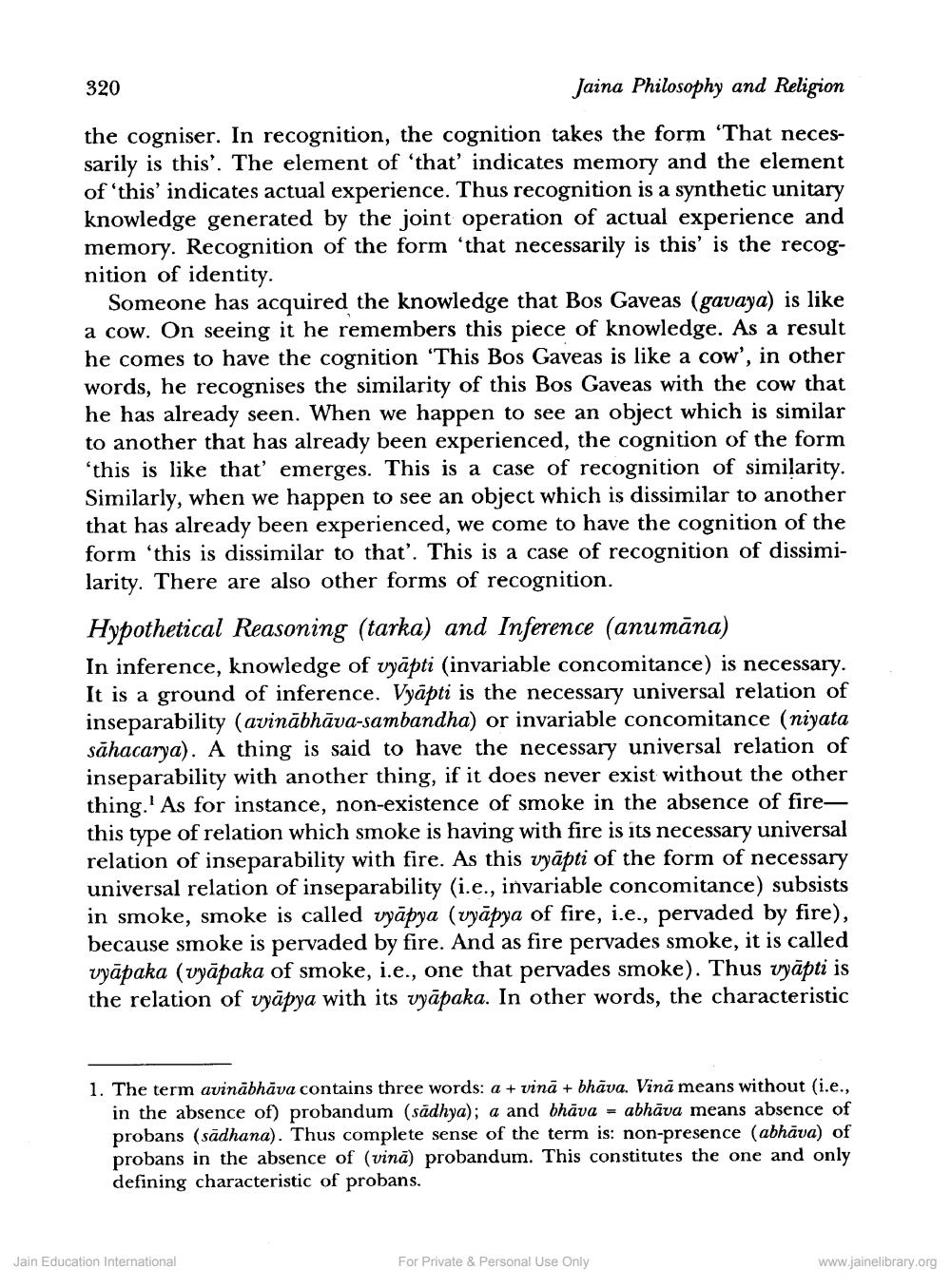________________
320
Jaina Philosophy and Religion
the cogniser. In recognition, the cognition takes the form 'That necessarily is this'. The element of 'that' indicates memory and the element of 'this' indicates actual experience. Thus recognition is a synthetic unitary knowledge generated by the joint operation of actual experience and memory. Recognition of the form 'that necessarily is this is the recognition of identity.
Someone has acquired the knowledge that Bos Gaveas (gavaya) is like a cow. On seeing it he remembers this piece of knowledge. As a result he comes to have the cognition 'This Bos Gaveas is like a cow', in other words, he recognises the similarity of this Bos Gaveas with the cow that he has already seen. When we happen to see an object which is similar to another that has already been experienced, the cognition of the form “this is like that' emerges. This is a case of recognition of similarity. Similarly, when we happen to see an object which is dissimilar to another that has already been experienced, we come to have the cognition of the form 'this is dissimilar to that'. This is a case of recognition of dissimilarity. There are also other forms of recognition.
Hypothetical Reasoning (tarka) and Inference (anumāna) In inference, knowledge of vyāpti (invariable concomitance) is necessary. It is a ground of inference. Vyāpti is the necessary universal relation of inseparability (avinābhāva-sambandha) or invariable concomitance (niyata sähacarya). A thing is said to have the necessary universal relation of inseparability with another thing, if it does never exist without the other thing.' As for instance, non-existence of smoke in the absence of firethis type of relation which smoke is having with fire is its necessary universal relation of inseparability with fire. As this vyāpti of the form of necessary universal relation of inseparability (i.e., invariable concomitance) subsists in smoke, smoke is called vyāpya (vyāpya of fire, i.e., pervaded by fire), because smoke is pervaded by fire. And as fire pervades smoke, it is called vyāpaka (vyāpaka of smoke, i.e., one that pervades smoke). Thus vyāpti is the relation of vyāpya with its vyāpaka. In other words, the characteristic
1. The term avinābhāva contains three words: a + vină + bhāva. Vinā means without (i.e.,
in the absence of) probandum (sādhya); a and bhāva = abhāva means absence of probans (sādhana). Thus complete sense of the term is: non-presence (abhāva) of probans in the absence of (vinā) probandum. This constitutes the one and only defining characteristic of probans.
Jain Education International
For Private & Personal Use Only
www.jainelibrary.org




